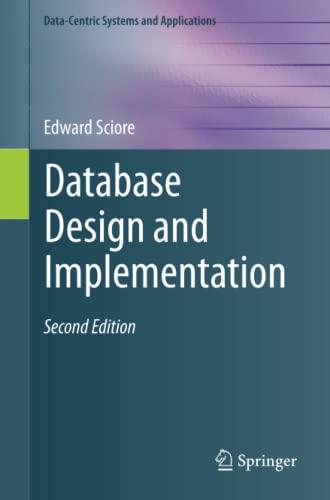Question
A big-data workload takes 8 hours to execute on a current system configuration with 20% of the time spent on CPU processing and 35% of
A big-data workload takes 8 hours to execute on a current system configuration with 20% of the time spent on CPU processing and 35% of the time on I/O. In an effort to speed up processing, you are offered two alternatives: The first (which costs $1,000) is to use a faster processor that makes each integer operation take 25% less time (e.g., instruction cycle goes down from 10 nanoseconds to 7.5 nanoseconds. The second is to use a new faster I/O device that reduces the latency of each I/O operations from 6 microseconds to 5 microseconds (which costs $4,000). Answer the following questions:
a. What is the speedup that you expect if you pick the faster processor?
b. What is the speedup that you expect if you pick the faster I/O?
c. On a per-dollar basis, which of the two improvements is better?
d. What is the speedup that you expect if you pick both improvements?
e. What is the theoretical limit for the speedup that can be achieved by making the processor lightning-speed fast? f. What is the theoretical limit for the speedup that can be achieved by making the I/O device lightning-speed fast?
Step by Step Solution
There are 3 Steps involved in it
Step: 1

Get Instant Access to Expert-Tailored Solutions
See step-by-step solutions with expert insights and AI powered tools for academic success
Step: 2

Step: 3

Ace Your Homework with AI
Get the answers you need in no time with our AI-driven, step-by-step assistance
Get Started


